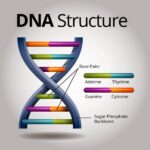The establishment of DNA databases as a cornerstone of modern law enforcement represents a profound shift in the landscape of criminal justice. These repositories, teeming with genetic blueprints, are powerful tools for identifying perpetrators and exonerating the wrongly accused. Understanding the genesis of these databases, specifically how individuals’ DNA profiles initially find their way into them, requires a multi-faceted exploration, delving into legal frameworks, operational procedures, and the ethical considerations that undergird this technology.
At its most fundamental, the acquisition of DNA for inclusion in these databases stems from lawful collection. This lawful collection often begins with arrests. When a suspect is apprehended for a qualifying offense, which varies depending on jurisdiction, a biological sample, typically a buccal swab (a simple cheek swab), is taken. The legal justification for this is rooted in the principle that individuals suspected of certain crimes relinquish some degree of their privacy rights for the sake of public safety and investigative efficiency.
Think of DNA databases as a vast, digital fingerprint repository, far more precise and informative than its analog predecessor. Each entry is not merely a set of ridges and valleys, but a complex sequence of nucleotides – the building blocks of life itself – uniquely identifying an individual with near-certainty. The power of this identification tool is undeniable.
Moving beyond arrests, another significant pathway for DNA entry involves convicted offenders. Post-conviction DNA collection is a standard practice in many jurisdictions, particularly for individuals convicted of felonies or specific misdemeanor offenses. This process ensures that a permanent record of their genetic profile is maintained, facilitating investigations into future crimes. Imagine this as archiving a crucial piece of evidence after a trial. The DNA profile becomes a permanent component of the criminal justice system’s toolkit. The rationale here rests on the idea that individuals who have demonstrated a propensity for criminal behavior pose an ongoing risk to society, warranting the perpetual retention of their DNA information.
Abandoned DNA, perhaps the most intriguing source, enters databases somewhat serendipitously. This refers to DNA samples left behind at crime scenes or in public places, unknowingly shed by individuals. A discarded cigarette butt, a used drinking glass, or even a saliva droplet can contain enough DNA to create a profile. If that profile matches one already in the database, it can link the individual to the crime scene, or, more darkly, if it doesn’t match, it enters the vast undifferentiated sea of ‘unknown’ samples hoping for a match in the future. This highlights the ubiquitous nature of DNA, its capacity to be unwittingly deposited and subsequently utilized for forensic purposes.
Familial DNA searching, while controversial, provides another route for populating these databases, albeit indirectly. This technique involves searching the database for DNA profiles that are closely related to the DNA found at a crime scene, but not a direct match. The goal is to identify potential relatives of the perpetrator, thereby narrowing the pool of suspects. This approach raises significant ethical concerns related to privacy and the potential for misidentification. Its usage is often restricted to serious offenses, such as homicide or sexual assault, where all other investigative avenues have been exhausted. The ethical quagmire stems from the fact that individuals who have never committed a crime can become entangled in an investigation simply by virtue of their genetic relationship to a suspect. It creates ripples of consequence far beyond the individual targeted by the primary investigation.
Furthermore, the expansion of DNA databases is sometimes achieved through voluntary DNA collection initiatives. These programs often target specific populations, such as victims of crime or individuals who wish to clear their name in connection with a particular investigation. While participation is ostensibly voluntary, there can be subtle pressures to comply, particularly in situations where an individual is under suspicion. The appeal often lies in the promise of exoneration or the potential to assist in solving a crime, but the long-term implications of adding one’s DNA to a permanent database should be carefully considered.
One cannot discuss DNA databases without addressing the rigorous quality control measures implemented to ensure accuracy and reliability. From the moment a sample is collected to the final analysis and storage of the DNA profile, strict protocols are followed to prevent contamination, mislabeling, and other errors. Accredited laboratories, staffed by highly trained scientists, adhere to standardized procedures and undergo regular audits to maintain their certification. Think of it as a highly regulated chain of custody, ensuring the integrity of the genetic evidence at every step. Without such safeguards, the entire system would be rendered unreliable and potentially unjust.
The integration of robotics and automation is revolutionizing the handling and analysis of DNA samples. Automated extraction systems, robotic liquid handlers, and high-throughput sequencing platforms are accelerating the process and reducing the risk of human error. This increased efficiency allows for the processing of a larger volume of samples, leading to the expansion of DNA databases at an unprecedented pace. This technological evolution is driving the continued growth and influence of DNA databases in the criminal justice system.
Finally, the legal framework surrounding DNA databases is constantly evolving. Courts are grappling with complex questions about privacy rights, the permissible scope of DNA collection, and the use of familial DNA searching. Legislation is being enacted to address these issues and provide clearer guidance for law enforcement agencies. This ongoing legal and ethical debate underscores the importance of striking a balance between the legitimate needs of law enforcement and the fundamental rights of individuals. The future of DNA databases will depend on our ability to navigate these challenges thoughtfully and responsibly, ensuring that this powerful technology is used in a manner that is both effective and just. It is a careful dance between security and liberty, requiring constant vigilance and adaptation.










Leave a Comment